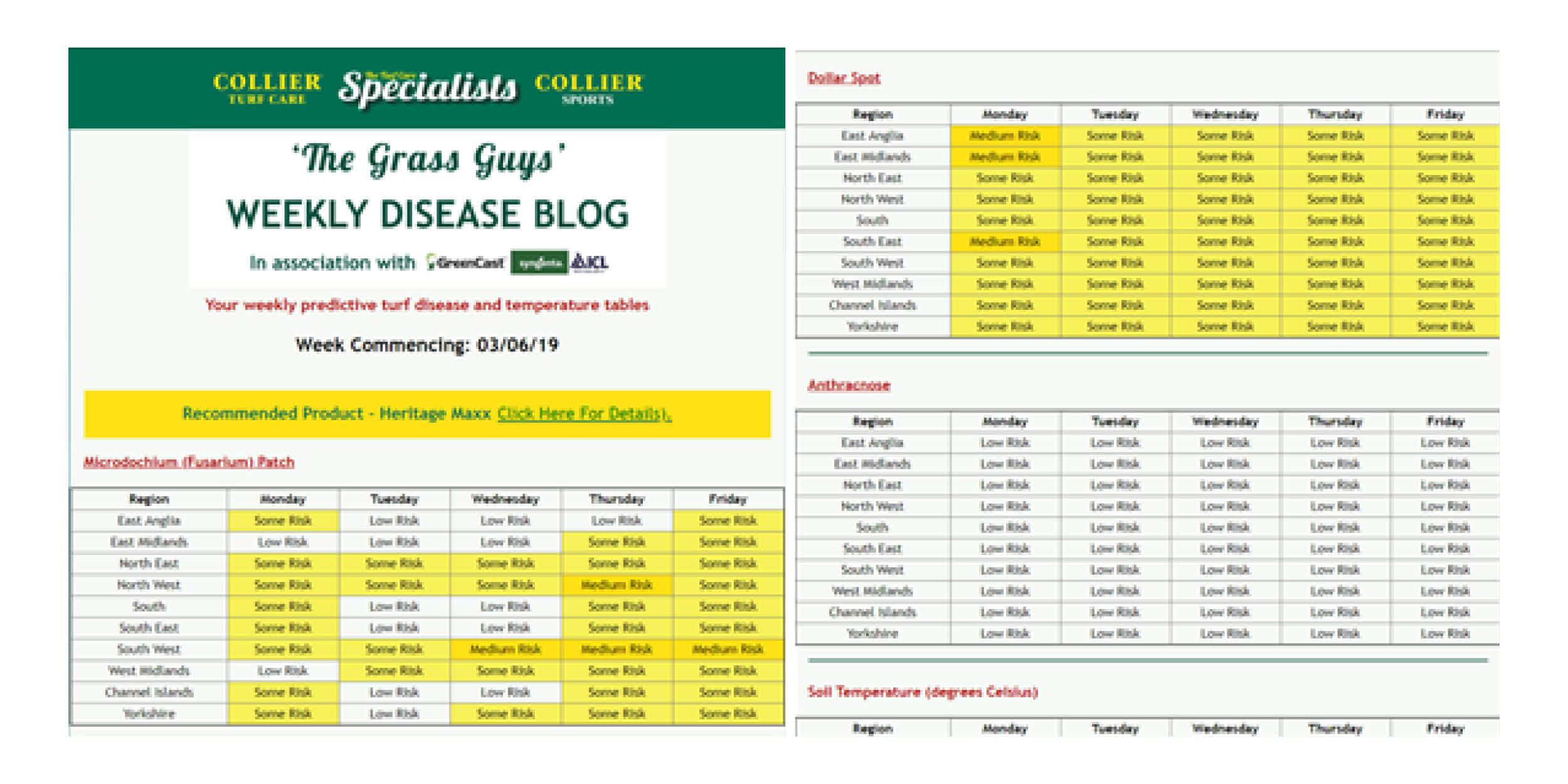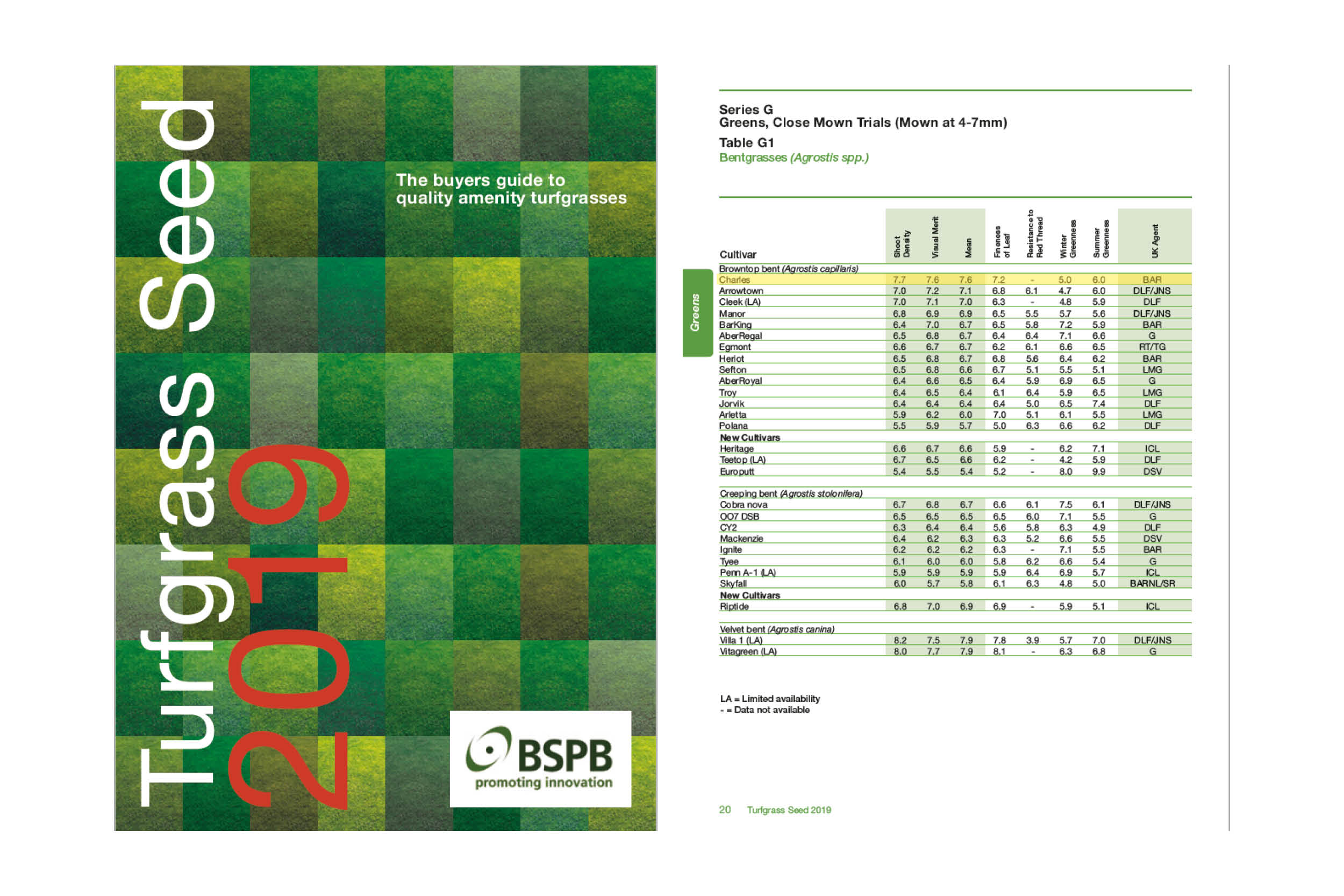Disease Management - What Now! IPM?
By Chris Humphrey MBPR FQA, Technical Manager
Fungicides
When I first started as a 16 year old apprentice greenkeeper some 40 years ago (I know, I don’t look that old!), It was custom to apply a blanket covering of a mercury based fungicide at the end of the summer and have greens protected against disease right through the winter. Since then, through a lot of investment and research, we have had a wide range of safe and effective fungicides that have had a selection of different modes of action. However there have been a number of fungicides revoked that we had come to rely on. The clock is now ticking on the revocation use up date for Propiconazol products and fungicides such as Instrata and Banner Maxx II will no longer be in the greenkeepers armoury. The final date for use or storage of all products containing Propiconazol is 19th March 2020.
Now things aren’t as easy as they once were and all greenkeepers need to really think ahead and prepare an IPM (Integrated Pest Management) plan. A good IPM will help the Greenkeeper to plan ahead and reduce pest and disease attacks.
Most fungicides that are currently available and those due to be released in the near future (they are not all disappearing and there are some more on the way) work in a preventative manner and therefore need to be applied when disease pressure is high and before the visible signs of an outbreak of disease. Part of a good IPM is to monitor and forecast the conditions at your site and predict when disease may become an issue. To help with this you can get the current disease risk in your area sent to you by signing up for free to the Collier Turf Care Weekly Disease Blog. Simply email sales@collier-turf-care.co.uk and ask to sign up to the Blog, and you will receive it in your inbox at the start of each week.

It is important that the fungicides we do have are used in a sensible way. Overuse or repetitive use of any one fungicide group can bring on resistance, rendering them ineffective to the disease you are trying to control. Pick the right one for the time of year. For advise make sure you speak to a BASIS advisor. Understanding how a fungicide works means that you can use the right one at the right time of year and reduce the overall number of applications.
An IPM approach is multi-pronged and an important part is to ensure healthy turf. If you can maintain your turf in a healthy condition and reduce turf stress it will be far more resistant to pest and disease attack.
Plant nutrition is a vital part of the overall turf health. Understand what the turf is telling you, get a soil sample every couple of years or if things aren’t working as expected, there could be nutrient deficiencies that need addressing. Ensure that you get advice from a FACTS Qualified Advisor. They can assist you in putting together a balanced nutritional programme that is bespoke to your turf. Don’t just look at your nutrient inputs, ask lots of questions. Where is the nutrient coming from? How quick will it release? How long will your feed last? What effect will temperatures have on the fertiliser? How will the nutrition source effect the pH? What ratios of nutrients you should use and at what time of year? Fertiliser makeup: quick release, standard release, slow release, or controlled release?
As part of the IPM it is important to include moisture management. Programme in a regular wetting agent and penetrant for the right time of year. Start a moisture management plan early in the spring. There are many moisture management products on the market and many of them work differently. Use a product that suits your rootzone and will hold enough water for your specific turf but will also not hold too much more than is required. Watering needs to be balanced, do not stress the turf out by letting it over dry, equally don’t over water and encourage Poa and subsequently leave a surface more prone to disease. The ideal way to water is to irrigate heavily to a depth just below the root level and let the rootzone dry from the top down. That way the roots will follow the water down, if you apply a little irrigation each day then the roots live in the wet area at the top of the sward and do not go deeper in search of water. Shallow rooting turf is far more prone to drought. Once the autumn is set in, consider switching your moisture control programme to a more penetrative based product to remove water from the thatch, leaving a dry surface and thus reducing the risk of Microdochium nivale disease.

Grass Seed
To produce the top quality turf surface you need to start with the best grass seed. It is important to choose seed that has the highest germination and is cleaned to the highest standards to ensure purity. The BSPB book helps turf mangers to select verities that are bread to give good levels of disease resistance.

Choose seed that is suitable for your particular site and that you can manage appropriately. There is no point sowing with a creeping bent grass unless you have sufficient staff and machinery to maintain it, likewise, don’t sow a grass that can only be mown to 5mm and then expect to cut it to 3mm, it may just about survive but it will be continually stressing and be very prone to disease attack.
Cultural Controls
Cultural controls are an important part of a good IPM plan. A good mix of operations to reduce the thatch should be programmed in. Consider combining deep scarifying, hollow tinning, solid tinning, slitting and sorrel rolling. Reducing thatch levels has a direct effect of reducing the disease risk. Look at your site, are there any physical operations you could carry out to improve airflow or to reduce shade, programme in things like crown reduction, bow lifting or even tree removal works into your IPM?
 Other cultural controls such as dew removal assist in disease prevention and reduce the reliance on fungicides. Consider using a dew suppressant at times when growth slows down and morning dews become regular.
Other cultural controls such as dew removal assist in disease prevention and reduce the reliance on fungicides. Consider using a dew suppressant at times when growth slows down and morning dews become regular.
Ensure that your mowers are set correctly to prevent tearing at the plant also ensure that the blades are kept sharp. Every time you cut you are damaging the plant and creating a wound that can easily be attacked by disease. Consider using a growth regulator so that at periods of high disease pressure you can miss the occasional cut whilst not affecting play.
When you do apply a fungicide it is very important to do it correctly. Know the size of the area you are treating, use the correct water volume and calibrate your sprayer. Some fungicides have quite a wide spectrum of diseases they control and therefore have a variable water volume. Think about what you are treating and where the fungicide needs to be applied, leaf or soil? Use a water volume suitable for the target.
Remember – if unsure then consult your BASIS qualified advisor. Ensure you are spraying in suitable weather, with a suitable pressure and very importantly with the correct nozzles. Most sprayers are fitted with standard agricultural nozzles, Syngenta have developed a range of nozzles particularly for use on turf. The XC nozzles are designed to deliver product to the turf and not to a standing crop like standard flat fan or bubble jet nozzles.

For help in building an IPM programme for your site, contact your Collier Turf Care Technical Representative. Or email sales@collier-turf-care.co.uk
All Collier Turf Care sales team members are BASIS / FACTS qualified or currently undergoing training towards the qualification and during this period are supervised by a qualified member of staff.